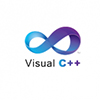Server Side Scripting
What's that about?
A server-side scripting language, such as Hypertext Preprocessor (PHP) or Active Server Pages (ASP), is a language that's used to program the behavior of the server. The idea behind languages such as PHP was to make repetitive web tasks easier to do. So what's actually happening is that all of the code is being executed at the servers before being rendered on the clients browser. When a client requests a web page, say google.com, a request is sent from the client to the server, the server then processes the request and assembles all the necessary elements of the request, once complete, the server then returns the website back to the client browser in the form of a webpage. A really great advantage of server-side language is that the code often cannot be seen from the clients computer. Instead of viewing the script, typically, you'll only be allowed to view the html markup of the sites layout. When thinking about servers, you have to consider a few things. One of those things would be your server load. The site could falter if you have too many users trying to access the server at once.
Pros & Cons
- Secure (+)
- Server-side scripting helps keep activities such as banking or shopping online more secure by not displaying the actual code required to run those sites.
- Dynamic Loading (+)
- Server-side scripting allows for users to have content displayed according to how they'd like it to be displayed without having to rewrite code for every single client.
- Site Speed (-)
- In the event your site achieve social greatness, and user flock your pages by the hundreds, not having adequate server space could crash your site. But there are tons of ways to avoid this. Like using a content delivery service like MaxCDN.



